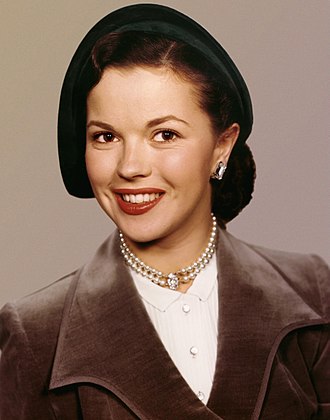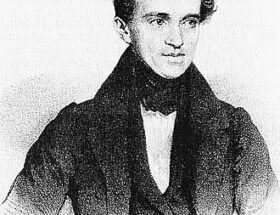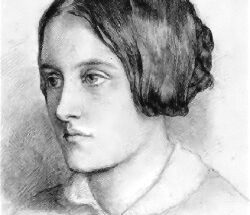Early life

Shirley Jane Temple was born on April 23, 1928, at Santa Monica Hospital in Santa Monica, California. She was the third child and only daughter of homemaker Gertrude Temple and bank employee George Temple.
Her mother encouraged her to develop her singing, dancing, and acting talents, and in September 1931, enrolled her in Meglin’s Dance School in Los Angeles. About this time, Gertrude began styling Shirley‘s hair in ringlets.
While at the dance school, Shirley was spotted by Charles Lamont, who was a casting director for Educational Pictures. Shirley hid behind the piano while he was in the studio. Lamont took a liking to her and invited her to audition, signing her to a contract in 1932.
Educational Pictures launched its Baby Burlesks,10-minute comedy shorts satirizing recent films and events, using preschool children in every role. Glad Rags to Riches was a parody of the Mae West feature She Done Him Wrong, with Shirley as a saloon singer. Kid ‘n’ Africa had Shirley imperiled in the jungle. The Runt Page was a pastiche of The Front Page. The juvenile cast delivered their lines as best they could, with the younger players reciting phonetically.
Shirley became the breakout star of this series and Educational promoted her to 20-minute comedies. These were in the Frolics of Youth series with Frank Coghlan Jr, Shirley played Mary Lou Rogers, the baby sister in a contemporary suburban family.
To underwrite production costs at Educational Pictures her child co-stars and she modeled for breakfast cereals and other products. Shirley was lent to Tower Productions for a small role in her first feature film The Red-Haired Alibi in 1932 and, in 1933, to Universal, Paramount and Warner Bros. Pictures for various parts.
Filming career
Fox Film songwriter Jay Gorney was walking out of the viewing of Shirley‘s last Frolics of Youth picture when he saw her dancing in the movie-theater lobby. Recognizing her from the screen, he arranged for her to have a screen test for the movie Stand Up and Cheer!
Shirley arrived for the audition on December 7, 1933 and won the part. She was signed to a $150-per-week contract that was guaranteed for two weeks by Fox Film Corporation.
The role was a breakthrough performance for Shirley. Her charm was evident to Fox executives and she was ushered into corporate offices almost immediately after finishing “Baby, Take a Bow”, a song-and-dance number she performed with James Dunn.

Most of the Shirley‘s films were inexpensively made at $200,000 or $300,000 apiece and were comedy dramas with songs and dances added, sentimental and melodramatic situations, with few production values.
Her film titles are a clue to the way she was marketed—Curly Top and Dimples, and her “little” pictures such as The Little Colonel and The Littlest Rebel. Shirley often played a fixer-upper, a precocious Cupid, or the good fairy in these films, reuniting her estranged parents or smoothing out the wrinkles in the romances of young couples. Elements of the traditional fairy tale were woven into her films – wholesome goodness triumphing over meanness and evil, for example, or wealth over poverty, marriage over divorce, or a booming economy over a depressed one.

As Shirley matured into a preadolescent, the formula was altered slightly to encourage her naturalness, naïveté and tomboyishness to come forth and shine while her infant innocence, which had served her well at six, but was inappropriate for her tweens, was toned down.
Biographer John Kasson argues:
In almost all of these films, she played the role of emotional healer, mending rifts between erstwhile sweethearts, estranged family members, traditional and modern ways, and warring armies. Characteristically lacking one or both parents, she constituted new families of those most worthy to love and protect her. Producers delighted in contrasting her diminutive stature, sparkling eyes, dimpled smile, and 56 blond curls by casting her opposite strapping leading men, such as Gary Cooper, John Boles, Victor McLaglen, and Randolph Scott. Yet her favorite co-star was the great African American tap dancer Bill “Bojangles” Robinson, with whom she appeared in four films, beginning with The Little Colonel (1935), in which they performed the famous staircase dance.
Biographer Anne Edwards wrote about the tone and tenor of Shirley‘s films:
This was mid-Depression, and schemes proliferated for the care of the needy and the regeneration of the fallen. But they all required endless paperwork and demeaning, hours-long queues, at the end of which an exhausted, nettled social worker dealt with each person as a faceless number. Shirley offered a natural solution: to open one’s heart.
Anne Edwards pointed out that the characters created for Shirley would change the lives of the cold, the hardened, and the criminal with positive results. Her films were seen as generating hope and optimism, and President Franklin D. Roosevelt said, “It is a splendid thing that for just 15 cents, an American can go to a movie and look at the smiling face of a baby and forget his troubles.”
On December 21, 1933, Shirley‘s contract was extended to a year at the same $150 per week with a seven-year option, and her mother Gertrude was hired at $25 per week as her hairdresser and personal coach.
Released in May 1934, Stand Up and Cheer! became Shirley‘s breakthrough film. She performed in a short skit in the film alongside popular Fox star James Dunn, singing and tap dancing. The skit was the highlight of the film and Fox executives rushed her into another film with Dunn, Baby Take a Bow. Shirley‘s third film, also with Dunn, was Bright Eyes.
After the success of her first three films, Shirley‘s parents realized that their daughter was not being paid enough money. Her image also began to appear on numerous commercial products without her legal authorization and without compensation. To get control over the corporate unlicensed use of her image and to negotiate with Fox, Gertrude and George Temple hired lawyer Lloyd Wright to represent them.
On July 18, 1934, the contractual salary was raised to $1,000 per week. Meanwhile, Gertrude‘s salary was raised to $250 per week, with an additional $15,000 bonus for each movie finished. Cease-and-desist letters were sent out to many companies and the process was begun for awarding corporate licenses.
On December 28, 1934, Bright Eyes was released. The movie was the first feature film crafted specifically for Shirley‘s talents and the first where her name appeared over the title. Her signature song, “On the Good Ship Lollipop”, was introduced in the film and sold 500,000 sheet-music copies.
In February 1935, Shirley became the first child star to be honored with a miniature Juvenile Oscar for her film accomplishments. She also added her footprints and handprints to the forecourt at Grauman’s Chinese Theatre a month later.
Starlet status
In 1935, Fox Films merged with 20th Century Pictures to become 20th Century-Fox. Producer and studio head Darryl F. Zanuck focused his attention and resources upon cultivating Shirley‘s superstar status. She was said to be the studio’s greatest asset. Nineteen writers, known as the Shirley Temple Story Development team, made 11 original stories and some adaptations of the classics for her.
In keeping with her star status, Winfield Sheehan built Shirley a four-room bungalow at the studio with a garden, a picket fence, a tree with a swing, and a rabbit pen. The living room wall was painted with a mural depicting her as a fairy-tale princess wearing a golden star on her head.
Under Zanuck she was assigned a bodyguard, John Griffith, a childhood friend of Zanuck’s and at the end of 1935, Frances “Klammie” Klampt became her tutor at the studio.
1935-1940
In the contract they signed in July 1934, Shirley‘s parents agreed to four films a year. A succession of films followed: Now and Forever starring Gary Cooper and Carole Lombard, The Little Colonel, Our Little Girl, Curly Top and The Littlest Rebel in 1935. Both Curly Top and The Littlest Rebel were named to Variety‘s list of top box office draws for 1935. In 1936 Captain January, Poor Little Rich Girl, Dimples and Stowaway were released.
Based on Shirley‘s success, Zanuck increased budgets and production values for her films. By the end of 1935, her salary was $2,500 per week. In 1937, John Ford was hired to direct the sepia-toned Wee Willie Winkie (Shirley’s own favorite) and an A-list cast was signed, which included Victor McLaglen, C. Aubrey Smith and Cesar Romero. The film was a critical and commercial hit.
Shirley‘s parents and Twentieth Century-Fox sued British writer/critic Graham Greene for libel and won. The settlement remained in trust for Shirley in an English bank until she turned 21, when it was donated to charity and used to build a youth center in England.
Heidi was the only other Shirley film released in 1937. Midway through shooting of the movie, the dream sequence was added to the script. Shirley herself reportedly was behind the dream sequence and she had enthusiastically pushed for it, but in her autobiography, she vehemently denied this. Her contract gave neither her parents nor her any creative control over her movies. She saw this as Zanuck’s refusal to make any serious attempt at building upon the success of her dramatic role in Wee Willie Winkie.
One of the many examples of how Shirley was permeating popular culture at the time is the references to her in the 1937 film Stand-In, with newly minted film studio honcho Atterbury Dodd (played by Leslie Howard) having never heard of Shirley Temple, much to the shock and disbelief of former child star Lester Plum (played by Joan Blondell), who described herself as “the Shirley Temple of my day”.
In 1938, Rebecca of Sunnybrook Farm, Little Miss Broadway and Just Around the Corner were released. The latter two were panned by the critics and Corner was the first of Shirley‘s films to show a slump in ticket sales.
The following year, Zanuck secured the rights to the children’s novel A Little Princess, believing the book would be an ideal vehicle for Shirley. He budgeted the film at $1.5 million (twice the amount of Corner) and chose it to be her first Technicolor feature. The Little Princess became a critical and commercial success.
Convinced that Shirley would successfully move from child star to teenaged actress, Zanuck declined a substantial offer from MGM to star her as Dorothy in The Wizard of Oz and cast her instead in Susannah of the Mounties, Shirley‘s last money-maker for 20th Century Fox.
The film was successful, but due to Shirley making only two films in 1939, instead of three or four, she dropped from number-one box-office favorite in 1938 to number five in 1939.
In 1939, Shirley was the subject of the Salvador Dalí painting Shirley Temple, The Youngest, Most Sacred Monster of the Cinema in Her Time and she was animated with Donald Duck in The Autograph Hound.
In 1940, Lester Cowan, an independent film producer, bought the screen rights to F. Scott Fitzgerald‘s Babylon Revisited and Other Stories for $80. Fitzgerald thought his screenwriting days were over and, with some hesitation, accepted Cowan‘s offer to write the screenplay titled “Cosmopolitan” based on the short story.
After finishing the screenplay, Fitzgerald was told by Cowan that he would not do the film unless Shirley starred in the lead role of the youngster Honoria. Fitzgerald objected, saying that at age 12 the actress was too worldly for the part and would detract from the aura of innocence otherwise framed by Honoria’s character.
After meeting Shirley in July, Fitzgerald changed his mind and tried to persuade her mother to let her star in the film. However, her mother demurred. In any case, the Cowan project was shelved by the producer. Fitzgerald was later credited with the use of the original story for The Last Time I Saw Paris starring Elizabeth Taylor.
In 1940, Shirley starred in two flops at 20th Century-Fox, The Blue Bird and Young People. Her parents bought out the remainder of her contract and sent her to Westlake School for Girls, an exclusive country day school in Los Angeles.
Final years & retirement
After her departure from 20th Century-Fox, Shirley was signed by MGM for her comeback. The studio made plans to team her with Judy Garland and Mickey Rooney for the Andy Hardy series. However, upon meeting with Arthur Freed for a preliminary interview, the MGM producer exposed his genitals to her. When this elicited nervous giggles in response, Freed threw her out and ended their contract before any films were produced.
The next idea was teaming her with Garland and Rooney for the musical Babes on Broadway. Fearing that either of the latter two could easily upstage Shirley, MGM replaced her with Virginia Weidler. As a result, her only film for MGM was Kathleen in 1941, a story about an unhappy teenager. The film was not a success and Shirley‘s MGM contract was cancelled after mutual consent.
Miss Annie Rooney followed for United Artists in 1942, but was unsuccessful. Shirley then retired from films for almost two years, to instead focus on school and other activities.
In 1944, David O. Selznick signed Shirley to a four-year contract. She appeared in two wartime hits: Since You Went Away and I’ll Be Seeing You. Selznick, however, became romantically involved with Jennifer Jones and lost interest in developing Shirley‘s career.
Shirley was then lent to other studios for Kiss and Tell and The Bachelor and the Bobby-Soxer starring Cary Grant. The Cary Grant picture and Fort Apache starring John Wayne and Henry Fonda were two of her few hit films at the time.
According to biographer Robert Windeler, Shirley‘s 1947–1949 films neither made nor lost money, but “had a cheapie B look about them and indifferent performances from her”.
Selznick suggested that she move abroad, gain maturity as an actress and even change her name. He warned her that she was typecast and her career was in perilous straits.
After unsuccessfully auditioning for the role of Peter Pan on the Broadway stage in August 1950, Shirley took stock and admitted that her recent movies had been poor fare. She announced her retirement from films on December 16, 1950.
Radio career
Shirley had her own radio series on CBS. Junior Miss debuted on March 4, 1942, in which she played the title role. The series was based on stories by Sally Benson. Sponsored by Procter & Gamble, Junior Miss was directed by Gordon Hughes, with David Rose as musical director.
Merchandise
John Kasson states:
She was also the most popular celebrity to endorse merchandise for children and adults, rivaled only by Mickey Mouse. She transformed children’s fashions, popularizing a toddler look for girls up to the age of 12, and by the mid-1930s, Ideal Novelty and Toy Company’s line of Shirley Temple dolls accounted for almost a third of all dolls sold in the country.
Ideal Toy and Novelty Company in New York City negotiated a license for dolls with the company’s first doll wearing the polka-dot dress from Stand Up and Cheer! Shirley Temple dolls realized $45 million in sales before 194. A mug, a pitcher and a cereal bowl in cobalt blue with a decal of the little actress were given away as a premium with Wheaties.
Successful Shirley Temple items included a line of girls’ dresses, accessories, soap, dishes, cutout books, sheet music, mirrors, paper tablets, and numerous other items. Before 1935 ended, the girl’s income from licensed merchandise royalties would exceed $100,000, which doubled her income from her movies. In 1936, her income from royalties topped $200,000.
Shirley endorsed Postal Telegraph, Sperry Drifted Snow Flour, the Grunow Teledial radio, Quaker Puffed Wheat, General Electric and Packard automobiles.
Alongside licensed merchandise came counterfeit items bearing Shirley‘s likeness to capitalize on her fame, from dolls, clothing, and other accessories to even cigars with her face printed on the label.
Shirley lamented in her memoirs that it “made no economic sense” to pursue litigation against those who made unlicensed goods under her name. A successful lawsuit was filed by Ideal Toy Company against a certain Lenora Doll Company, which manufactured and sold Shirley Temple dolls without authorization, with Shirley herself cited as a co-plaintiff befitting her celebrity status.
Television career
Between January 1958 and September 1961, Shirley hosted and narrated a successful NBC television anthology series of fairy-tale adaptations called Shirley Temple’s Storybook. Episodes ran one hour each, and Shirley acted in three of the 16 episodes. Shirley‘s son made his acting debut in the Christmas episode, “Mother Goose”.
The series was popular, but faced issues. The show lacked the special effects necessary for fairy-tale dramatizations, sets were amateurish, and episodes were not telecast in a regular time slot. The show was reworked and released in color in September 1960 in a regular time slot as The Shirley Temple Show.
However, it faced stiff competition from Maverick, Lassie, Dennis the Menace, the 1960 telecast of The Wizard of Oz and the Walt Disney anthology television series and was cancelled at season’s end in September 1961.
Shirley continued to work in television, making guest appearances on The Red Skelton Show, Sing Along with Mitch and other shows. In January 1965, she portrayed a social worker in a pilot called Go Fight City Hall that was never released.
In 1999, Shirley hosted the AFI’s 100 Years…100 Stars awards show on CBS and in 2001 served as a consultant on an ABC-TV production of her autobiography, Child Star: The Shirley Temple Story.
Motivated by the popularity of Storybook and television broadcasts of Shirley‘s films, the Ideal Toy Company released a new version of the Shirley Temple doll and Random House published five fairy tale anthologies under her name. About 300,000 dolls were sold within six months and 225,000 books between October and December 1958. Other merchandise included handbags and hats, coloring books, a toy theater, and a recreation of the Baby, Take a Bow polka-dot dress.
Diplomatic career
Shirley became active in the California Republican Party. In 1967, she ran unsuccessfully in a special election in California’s 11th congressional district to fill the seat left vacant by the death from leukemia of eight-term Republican J. Arthur Younger.
Shirley ran in the open primary as a conservative Republican and came in second with 34,521 votes (22.44%), behind Republican law school professor Pete McCloskey, who placed first in the primary with 52,882 votes (34.37%) and advanced to the general election with Democrat Roy A. Archibald, who finished fourth with 15,069 votes (9.79%), but advanced as the highest-placed Democratic candidate. In the general election, McCloskey was elected with 63,850 votes (57.2%) to Archibald‘s 43,759 votes (39.2%). Shirley received 3,938 votes (3.53%) as an independent write-in.

Shirley was extensively involved with the Commonwealth Club of California, a public-affairs forum headquartered in San Francisco. She spoke at many meetings throughout the years, and was president for a period in 1984.
Shirley got her start in foreign service after her failed run for Congress in 1967, when Henry Kissinger overheard her talking about South West Africa at a party. He was surprised that she knew anything about it. Shirley was appointed as a delegate to the 24th United Nations General Assembly (September – December 1969) by President Richard M. Nixon and United States Ambassador to Ghana (December 6, 1974 – July 13, 1976) by President Gerald R. Ford.
Shirley was appointed first female Chief of Protocol of the United States (July 1, 1976 – January 21, 1977), and in charge of arrangements for President Jimmy Carter‘s inauguration and inaugural ball.
Shirley served as the United States Ambassador to Czechoslovakia (August 23, 1989 – July 12, 1992), having been appointed by President George H. W. Bush and was the first and only woman in this job.
Shirley bore witness to two crucial moments in the history of Czechoslovakia’s fight against communism. She was in Prague in August 1968, as a representative of the International Federation of Multiple Sclerosis Societies and was going to meet with Czechoslovakian party leader Alexander Dubček on the very day that Soviet-backed forces invaded the country.
Dubček fell out of favor with the Soviets after a series of reforms, known as the Prague Spring. Shirley, who was stranded at a hotel as the tanks rolled in, sought refuge on the roof of the hotel. She later reported that it was from there she saw an unarmed woman on the street gunned down by Soviet forces, the sight of which stayed with her for the rest of her life.
Later, after she became ambassador to Czechoslovakia, she was present during the Velvet Revolution, which brought about the end of communism in Czechoslovakia. Shirley openly sympathized with anti-communist dissidents and was ambassador when the United States established formal diplomatic relations with the newly elected government led by Václav Havel. She took the unusual step of personally accompanying Havel on his first official visit to Washington, travelling on the same plane.
Shirley served on boards of directors of large enterprises and organizations, such as The Walt Disney Company, Del Monte Foods, Bank of America, Bank of California, BANCAL Tri-State, Fireman’s Fund Insurance, United States Commission for UNESCO, United Nations Association and National Wildlife Federation.
Personal life

In 1943, 15-year-old Shirley met John Agar, an Army Air Corps sergeant, physical training instructor and member of a Chicago meat-packing family. She married him at age 17 on September 19, 1945, before 500 guests in an Episcopal ceremony at Wilshire Methodist Church in Los Angeles.
On January 30, 1948, Shirley bore a daughter, Linda Susan. John Agar became an actor and the couple made two films together, Fort Apache (1948) and Adventure in Baltimore (1949) for RKO. Agar was reportedly alcoholic and had extramarital affairs. Shirley divorced Agar on the grounds of mental cruelty in December 5, 1949 and was awarded custody of their daughter.
In January 1950, Shirley met Charles Alden Black, a World War II Navy intelligence officer and Silver Star recipient who was Assistant to the President of the Hawaiian Pineapple Company. Conservative and patrician, he was the son of James Black, president and later chairman of Pacific Gas and Electric, and reputedly one of the richest young men in California. Shirley and Black were married in his parents’ Del Monte, California home on December 16, 1950, before a small assembly of family and friends.
The family moved to Washington, D.C., when Black was recalled to the Navy at the outbreak of the Korean War. On April 28, 1952, Shirley gave birth to a son, Charles Alden Black Jr., in Washington.
Following the war’s end and Black‘s discharge from the Navy, the family returned to California in May 1953. Black managed television station KABC-TV in Los Angeles and Shirley became a homemaker. Their daughter, Lori, was born on April 9, 1954.
In September 1954, Charles Sr. became director of business operations for the Stanford Research Institute and the family moved to Atherton, California. The couple were married for 54 years until his death on August 4, 2005, at his home in Woodside, California, of complications from a bone marrow disease.
Last years & death
At age 44, in 1972, Shirley was diagnosed with breast cancer. The tumor was removed and a modified radical mastectomy performed. At the time, cancer was typically discussed in hushed whispers, and Shirley‘s public disclosure was a significant milestone in improving breast cancer awareness and reducing stigma around the disease. She announced the results of the operation on radio and television and in a February 1973 article for the magazine McCall’s.
Shirley died at age 85 on February 10, 2014, at her home in Woodside, California. The cause of death, according to her death certificate released on March 3, 2014, was chronic obstructive pulmonary disease (COPD).
Shirley was a lifelong cigarette smoker but avoided displaying her habit in public because she did not want to set a bad example for her fans. She is buried at Alta Mesa Memorial Park.


